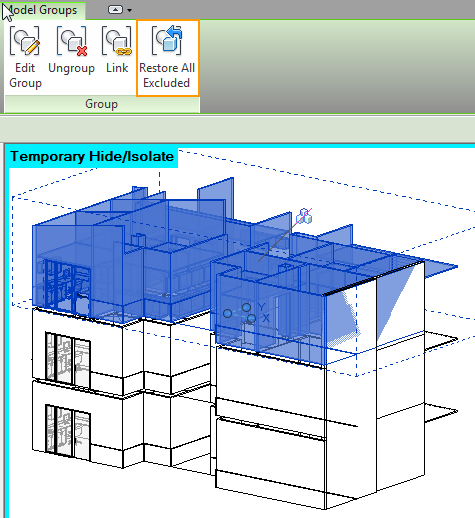The majority of current projects I’m consulting to are multi-family housing, or patient care. Both utilize model groups extensively to efficiently duplicate and update the repetitive room/unit layouts across multiple levels. While good for repetition and update management, groups can be processing intensive for Revit. A few things to keep in mind:
a) Exclusions from groups are VERY processing intensive. With each regeneration, Revit must individually check each group instance and ‘remove’ exclusions. If processing triggers a ‘clock time’ violation, excluded groups are often ‘fixed’ by Revit by duplicating the group and adding the dreaded “1” suffix, which means – that group will not update with it’s original group, and you may not notice that until a deadline!
TIP: Keep your groups to the lowest common denominator, and add to, rather than subtract from.
b) Watch for group elements that extend beyond their intended range – such as this multi-story shaft wall (that shouldn’t have been included in the group in the first place) – that once copied up to higher floors, resulted in overlapping walls that had to be excluded from subsequent group instances.
RESOLUTION:
How to avoid / check for these? Work with 2 views – the plan view and a 3D view. Select desired elements in plan; ‘temporarily isolate elements’ in 3D to verify the elements selected. In this case, either remove the multi-story wall from the group (and follow up removing duplicated walls on other levels) or modify the wall to a single level height and reinclude it into the subsequent group instances.





Pingback: Trackback
Pingback: Trackback